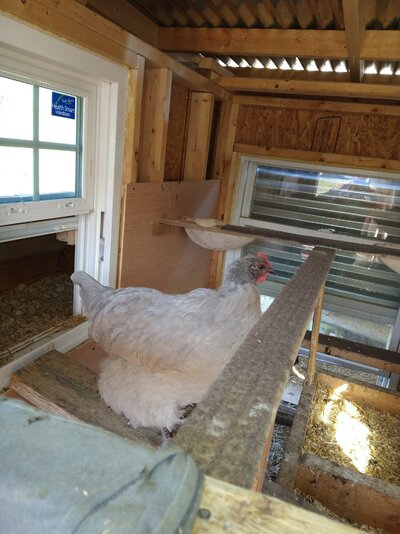GigitheBackyardHerbilist
Songster
With the current events and talk of no fertilizer. The fear of losing animal feed is real. So I've been researching going through all of my homesteading books trying to find ways to feed my chickens and keep them healthy and producing with no layer pellets and no grains. I have found a few amazing videos as well, on composting with chickens which I've been doing since I've got my chickens. (Last spring) That was one reason I was really thrilled to have my own so I didn't have to go to my friend's house and beg poop from them. 
What I'm finding is that composting and letting your chickens pick through compost, they eat the bugs they turn the compost and they leave their own little nuggets of nutrients behind. Is an excellent way to grow my crops.
Also there are crops you can grow just to feed your chickens which I was doing last year to supplement but now know, that there are ways to feed and I don't have to grow an entire crop of corn for the girls, which I have been failing miserably at, just trying to grow for our own table.
Hoping that my chicken poop would help me yield a better crop of corn for our family plus all my other veggies. But I do not have to grow another crop just for my chickens?
Which I just do not have the room.
So I thought I would start sharing some of the things that I am learning on how to feed your girls and boys, if there is no rural King to supply you with your chicken feed.
Anyone else interested in this? Anyone else have their own advice to give an ideas to share? I'd be happy to hear.
Just for fun, this is fluffy. Who's not so fluffy at the moment. She's molting. Lol
What I'm finding is that composting and letting your chickens pick through compost, they eat the bugs they turn the compost and they leave their own little nuggets of nutrients behind. Is an excellent way to grow my crops.
Also there are crops you can grow just to feed your chickens which I was doing last year to supplement but now know, that there are ways to feed and I don't have to grow an entire crop of corn for the girls, which I have been failing miserably at, just trying to grow for our own table.
Hoping that my chicken poop would help me yield a better crop of corn for our family plus all my other veggies. But I do not have to grow another crop just for my chickens?
Which I just do not have the room.
So I thought I would start sharing some of the things that I am learning on how to feed your girls and boys, if there is no rural King to supply you with your chicken feed.
Anyone else interested in this? Anyone else have their own advice to give an ideas to share? I'd be happy to hear.
Just for fun, this is fluffy. Who's not so fluffy at the moment. She's molting. Lol
Attachments
Last edited:




